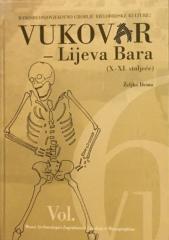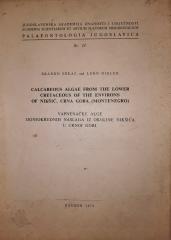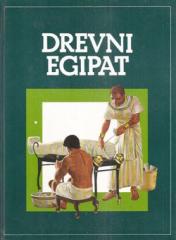
Vukovar – Lijeva Bara (X-XI. stoljeće): Ranosrednjovjekovno groblje bjelobrdske kulture I-II
The monograph includes, in addition to numerous pictures in the text, a plan of the cemetery, 434 drawings and 350 photographs of skeletons and 191 drawings of grave finds, more than 100 tabular representations and more than 50 typological drawings and ma
The monograph "Early Medieval Cemetery of Bjelobrd culture: Vukovar - Lijeva Bara (10th-11th century)" was published as the sixth publication within the Catalogi et Monographiae edition of the Archaeological Museum in Zagreb, in two volumes. dr. sc. Željko Demo, museum advisor and manager of the Medieval Collection of the Archaeological Museum in Zagreb, is the author of the exhibition 'Vukovar – Lijeva Bara: the history of an archaeological site (traces, research, signs)', set up at the beginning of 1996 in the Archaeological Museum in Zagreb, which, according to in the words of Ante Rendić-Miočević in the Introduction of the Monograph, served as a kind of announcement for the future more thorough scientific valorization of the investigated locality. The results of the analysis were published in 2009 in this extensive and detailed publication. The first part includes the Introduction and the Preface and the chapter Site and Excavation of the Early Medieval Cemetery and the Catalogue. The second part of the monograph begins with the chapter Grave rites, which describes the surface markings of graves, grave pits/pits (shape, measurement data, depths, arrangement), position of the deceased (general information, position of the forearms, orientation), graves with two or more deceased (double burials/graves), superpositioned geobos, destroyed graves (deliberate disturbance of the deceased's body), burial of horses or horse bones, and funerary customs and beliefs (found in a non-functional position). This is followed by the chapter Objects of the grave inventory (objects of daily use, objects for hunting and fishing, objects of toiletries, weapons and combat equipment, jewelry, objects of a cult character and objects of unknown purpose). The fifth chapter includes other finds (objects of previous cultural periods). Each of the listed categories is additionally typologically divided into specific sets of findings. The last chapter refers to the cultural and historical circumstances of the creation and ownership of the cemetery. Following are: List of subjects, List of appendices, pictures, tables and charts, and Bibliography. At the very end, there are boards in color with descriptions of the locality, aerial photographs, photographs of sketches, records and findings.
The book consists of two volumes.
Jedan višetomni primjerak je u ponudi.







